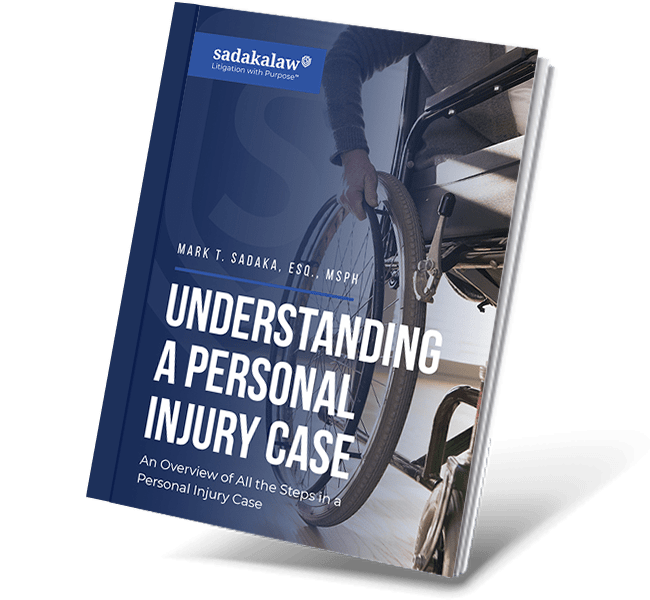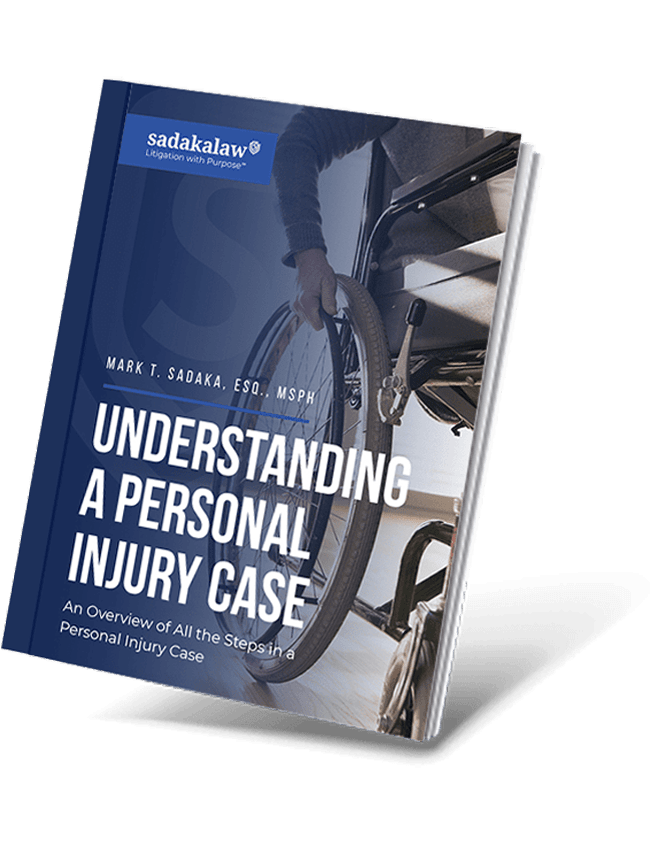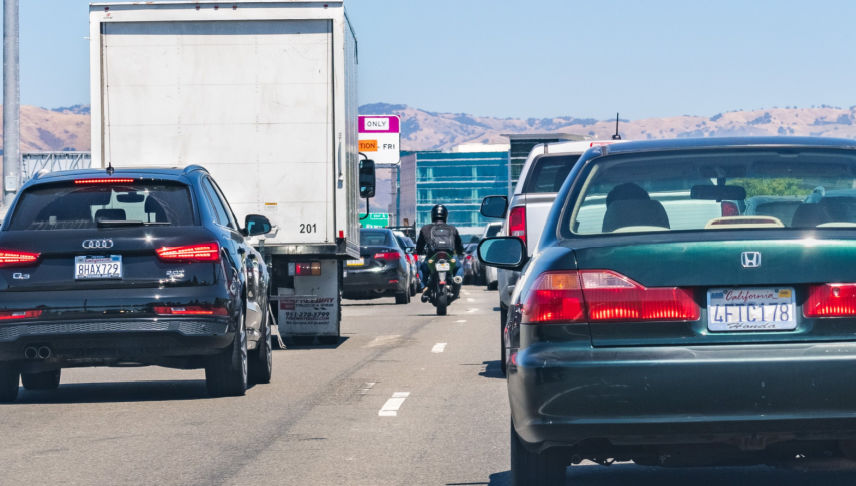
If you’re a motorcycle rider, understanding the safest strategies to ride in heavy traffic is essential to avoiding accidents. Motorcyclists are more vulnerable to serious injuries in accidents than drivers of passenger cars. As a result, they must take extra precautions to stay safe on the road.
Many motorcyclists wonder: “Is lane splitting legal in my state?” and “Is lane splitting safe?” Lane splitting, also known as white lining or stripe riding, is a practice prohibited in most states. Read on to learn everything you need to know about lane-splitting laws in New York, New Jersey, and the neighboring states.
Is Lane Splitting Legal?
Lane splitting is the practice of riding a motorcycle or bike between two cars heading in the same direction, often in the area of the road near the painted white line.
Motorcyclists sometimes use lane splitting to avoid being rear-ended in stop-and-go traffic. Riding between marked lanes of traffic allows them to get to the front of the line and spend less time in the dense, slow traffic.
While motorcycle lane splitting may seem like a good idea at times, it isn’t safe. Lane splitting is not legal in most states.
The only state that permits lane splitting is California. All other states either explicitly prohibit lane splitting or do not mention lane splitting in their motorcycle laws.
Lane splitting is different from lane filtering and lane sharing. Here are the definitions of each practice:
- Lane splitting: Weaving between traffic moving at higher speeds
- Lane filtering: Weaving between slow-moving traffic or stopped traffic
- Lane sharing: Riding with one or more motorcyclists side-by-side or staggered in the same lane.
Additionally, some states have begun making lane filtering legal. This practice is legal in Arizona, Montana, Hawaii, and Utah under certain conditions.
For example, motorcycle riders must stay within ten miles per hour of ambient traffic speed while lane filtering in these states. In several states, they must also be on a road with a speed limit of 45 miles per hour or less.
Some states, such as Hawaii, permit a practice called “shoulder surfing” instead of lane filtering or splitting.
Are Bicycles Allowed to Lane Split?
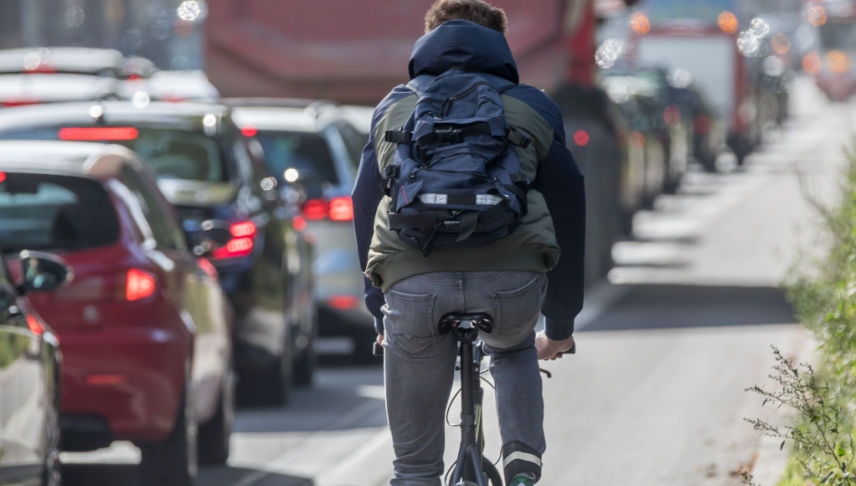
Most traffic laws regarding lane splitting and lane filtering for motorcycles also apply to bicycles. When bicycles split lanes, they make unpredictable movements that may increase their chances of being involved in an accident.
Lane Splitting Laws in New York
New York’s lane-splitting law explicitly prohibits motorcyclists from riding between traffic lanes. VAT § 1252 states the following:
- Motorcyclists should not overtake stopped or occupied vehicles in the same lane
- Motorcycle riders should not ride between two lanes of traffic, adjacent lines, or rows of vehicles
- Motorcyclists should not ride more than two abreast in a single lane
Reasons Why Lane Splitting is Illegal in NY
New York has chosen not to make lane splitting legal because this practice can put motorcyclists and other drivers at a higher risk of crashing. Lane filtering and splitting can be dangerous for several reasons:
- Motorcyclists splitting lanes risk being pinned between larger vehicles if drivers decide to change lanes as the motorcyclist rides through.
- Lane splitting can make other drivers angry and cause road rage, which may lead to accidents.
- Lane splitting is a maneuver that is not predictable to other drivers. As a result, motorcyclists can quickly become involved in accidents because other drivers do not see them weaving between traffic lanes.
Risks of Lane Splitting
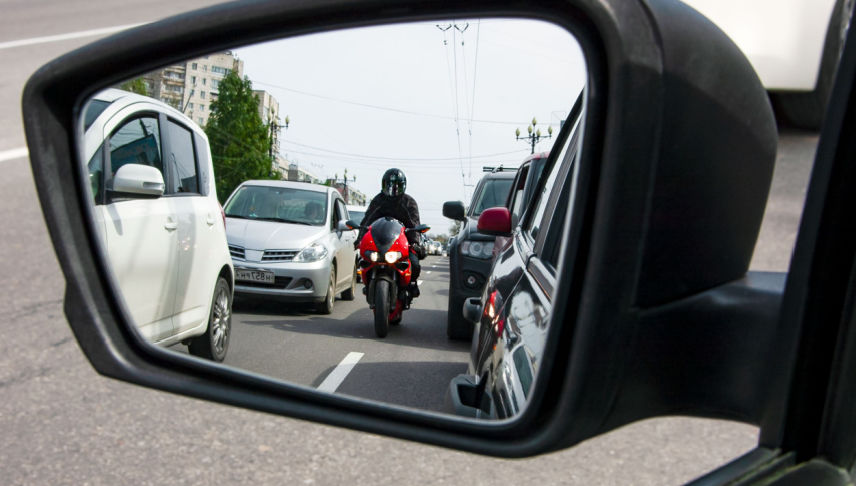
A study from UC Berkeley’s Safe Transportation Research & Education Center examined the risks of lane splitting for motorcyclists. This study found that lane splitting becomes more dangerous when motorcyclists travel more than ten miles per hour above the speed of other traffic in the same direction.
The study also found that approximately 2.6 percent of lane-splitting riders experience accidents. The most common cause of lane-splitting accidents is riders striking mirrors on other vehicles. According to the study, lane-splitting riders are more likely to rear-end other motor vehicles than be rear-ended.
The data from this study also indicates that lane splitting is more dangerous during commute times. However, lane-splitting riders are often more likely to engage in this practice during commutes to avoid a traffic jam or move to a safer traffic flow.
Accidents Caused by Lane Splitting
Most riders who engage in lane splitting and lane filtering put themselves at a greater risk of being involved in motorcycle accidents. Here are a few causes of accidents while lane splitting:
- Sudden braking: Motorcyclists who engage in lane splitting often do so during stop-and-go traffic, which usually involves sudden braking. This practice can also cause non-motorcycle drivers to brake suddenly when they notice motorcyclists passing, leading to rear-end collisions.
- Unseen motorcyclists: Motorcycle riders who lane split often make unpredictable movements that cause other drivers not to see them when changing lanes of traffic, leading to an accident.
- Sudden lane changes: When a motorcyclist rides between lanes, they do not have the right of way over drivers changing lanes. Drivers may pass into other lanes and strike motorcyclists who are lane filtering or splitting.
- Open car doors: Motorcyclists who ride between lanes of moving and stopped traffic are at risk of being struck by motorists opening their car doors in the stopped lane
Are There Any Nearby States to New York that Allow Lane Splitting?
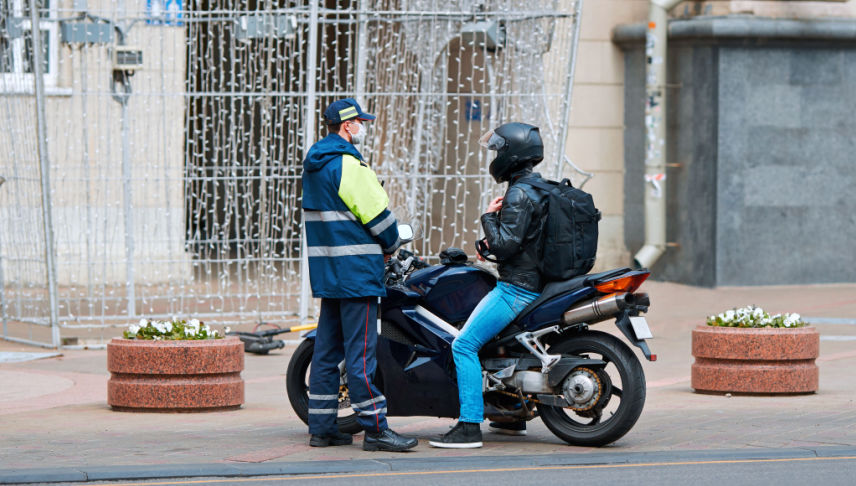
You may wonder, “Is lane splitting legal in any states near New York? While California is currently the only state in which lane splitting is explicitly legal, some states do not address lane splitting in their motorcycle laws. As a result, it is up to local law enforcement to determine the legal status of lane splitting.
States in the US Without Lane Splitting Regulations
Some states have not made lane splitting illegal, yet their laws have also not indicated that this practice is legal. The following states do not have any explicit lane-splitting regulations:
- New Jersey
- North Carolina
- Ohio
- Indiana
- Kentucky
- Arkansas
- Mississippi
- New Mexico
However, motorcycle lane splitting in these states can still result in a moving violation. For example, local law enforcement may cite a motorcycle rider for engaging in reckless or unsafe behavior and putting non-lane-splitting riders at risk.
The vast majority of the other states explicitly prohibit lane splitting.
States in the US Where Lane Splitting is Legal
California is currently the only state in which lane splitting is legal. However, the California Highway Patrol has indicated that it wishes it had never begun allowing this practice.
Motorcyclists in the state should beware that lane splitting could become illegal down the line. They should also follow lane splitting safety tips to avoid accidents.
Other states have attempted to legalize lane splitting in the past. For example, Washington State tried to legalize lane splitting in 2017 to no avail. Connecticut is also considering legalizing lane splitting under certain conditions.
What To Do If You Were in a Lane Splitting Accident
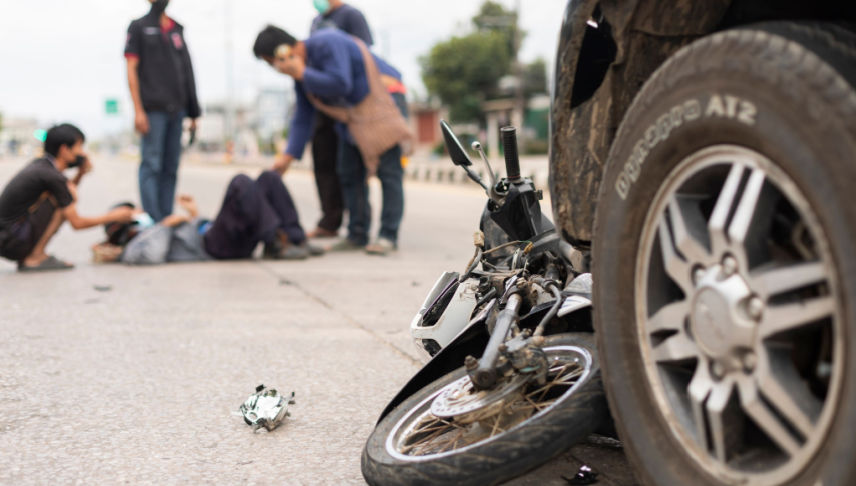
If you experienced a motorcycle accident with another driver while lane splitting, there’s a good chance the insurance company will find you at least partially at fault for the accident. Still, you should never admit fault after an accident, even if you believe your lane splitting caused the accident.
Instead, you should follow these steps after a lane-splitting accident:
- Take photos of the accident scene
- Seek medical treatment
- Gather evidence to support the other driver’s liability in the accident
- Hire an attorney to guide you through the claim and compensation process
Approaching this process strategically can increase your chances of receiving compensation after the accident.
How Lane Splitting Affects Compensation After an Accident
If you were lane splitting during an accident, you may not receive as much compensation as you would if the accident was entirely the other driver’s fault. However, a few factors can contribute to your compensation, such as:
- The other driver’s role in the accident
- Whether you were riding carefully or recklessly
- The severity of the accident
- The speed of the non-lane-splitting riders and drivers
- The location in which you lane split (i.e., freeway on-ramps vs. city streets)
If you’ve been involved in a lane-splitting accident, our attorneys can help. Contact our team at Sadaka Law today to schedule your consultation with a motorcycle accident attorney.

